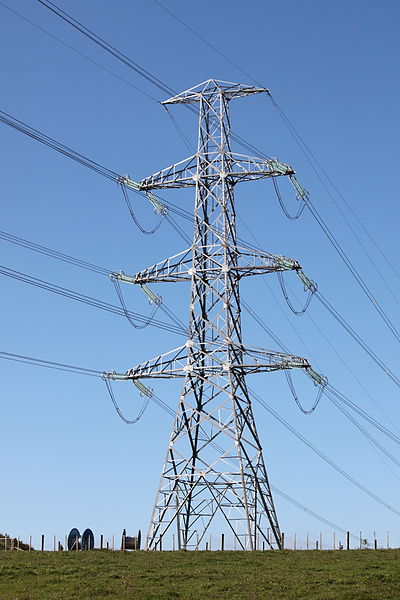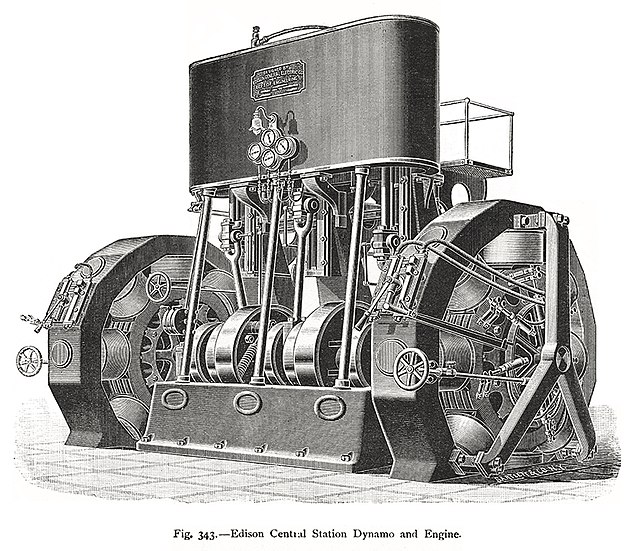The electric power industry covers the generation, transmission, distribution and sale of electric power to the general public and industry. The commercial distribution of electric power started in 1882 when electricity was produced for electric lighting. In the 1880s and 1890s, growing economic and safety concerns lead to the regulation of the industry. What was once an expensive novelty limited to the most densely populated areas, reliable and economical electric power has become an essential aspect for normal operation of all elements of developed economies.
Electric power is transmitted on overhead lines like these, and also on underground high-voltage cables
Bolsward Substation, the Netherlands
Transmission lines in Romania of which the nearest is a Phase Transposition Tower
High tension line in Montreal, Quebec, Canada
Electricity generation is the process of generating electric power from sources of primary energy. For utilities in the electric power industry, it is the stage prior to its delivery to end users or its storage, using for example, the pumped-storage method.
A turbo generator
Dynamos and engine installed at Edison General Electric Company, New York, 1895
Wind turbines usually provide electrical generation in conjunction with other methods of producing power.
Large dams, such as Hoover Dam in the United States, can provide large amounts of hydroelectric power. It has an installed capacity of 2.07 GW.








